Honda Jazz isn’t one of those ubiquitous subcompacts in our part of the world. You’ll probably see them more often on award podiums than in parking lots. However, that could be about to change with the new Jazz ticking three big vital boxes, striking a new balance like few subcompacts have!
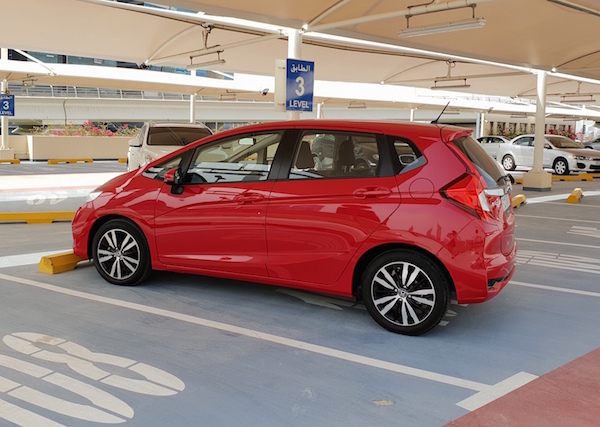
THE SPECS: 1.5L Direct Injection i-VTEC engine, Continuously Variable Transmission with G-Shift control, 16” alloy wheels
THE PERFORMANCE: 130hp @ 6600 rpm, 155N-m @ 4600 rpm, Mixed Test fuel economy: 13.8 km/L
THE HIGHLIGHTS: Front fog lights, 7” touch screen, steering wheel mounted controls, magic seat configurations
THE SAFETY: Vehicle Stability Assist (VSA), Anti-Lock Brake Systems (ABS), Electronic Brake Distributor (EBD) and Hill Start Assist (HSA), Whiplash Lessening Front Headrests and Driver and Passenger SRS Airba
THE PRICE: AED 63,900
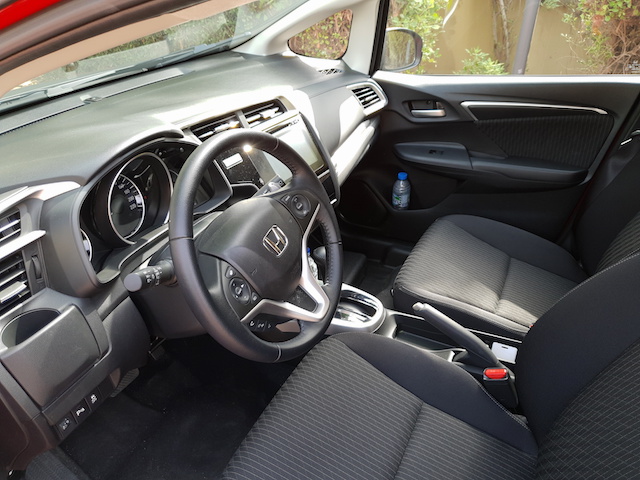
UPSIDE: Class-leading power, Excellent fuel economy, Impressive handling, Flexible rear space
DOWNSIDE: Fewer options, pricier than rivals
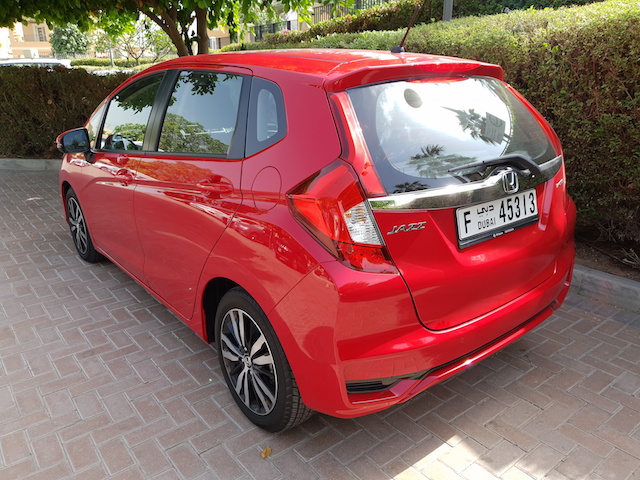
The Design
Standing apart started right from first glance. The Honda Jazz seems to have accomplished what Hyundai attempted some years back with moderate success in the Matrix – design a car that stood somewhere between a hatchback and a small multipurpose vehicle. (It is interesting to note that Hyundai had hired Pininfarina to design the Matrix.) The Honda Jazz looks different from a typical hatchback – it rather resembles a tent from the front. The trapezoidal design looks aerodynamic from all sides and makes more room for the heads and the legs that occupy its contemporary cabin.
Cabin and Controls
The remarkable design of Jazz continues inside. The hard plastic, the glistening stripes, and the glossy fiberglass screens were a combined expression of a young and modern design language. The MPV styling maximizes cabin space and leaves plenty in the rear and the boot as well. Two guests who rode with me on two different occasions seemed to emit an ‘impressed’ sort of hum before settling down completely into its elegantly striped fabric seats.
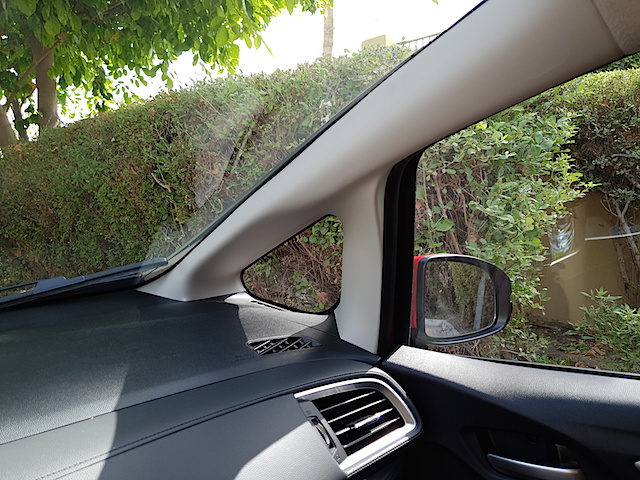
Inside the cabin, one meets the second most visible strength of the Honda Jazz – which is visibility itself. Shorter drivers especially will appreciate the sprawling windscreen that slopes at an easier angle affords a lot of viewing space, and even though the window line seems to be ascending on the sides, that doesn’t mar the side view too. And to make things even simpler for the driver, the Honda designers have fit in a small window into the base of the A-pillar – makes sense actually, because the rake of the windscreen throws the pillar rather in front causing an unusually wide base. Theoretically this should provide a vantage view at turns and it mostly does, except at times when the window looks further away from where you wish to be looking as the car turns. Only during those rare moments, the base makes itself felt like an extra-wide sleep mask.
For a subcompact, the steering not only stands out remarkably with a driver-connect but also features buttons of connectivity like radio, telephone and cruise control. As for Bluetooth telephony, there is a quick dial directory to be filled with frequently called numbers and even voice tag options (I didn’t get a chance to test the last one). However, there are times when the Honda screen and systems leave you feeling that there is an extra layer – that it could all be simplified still!
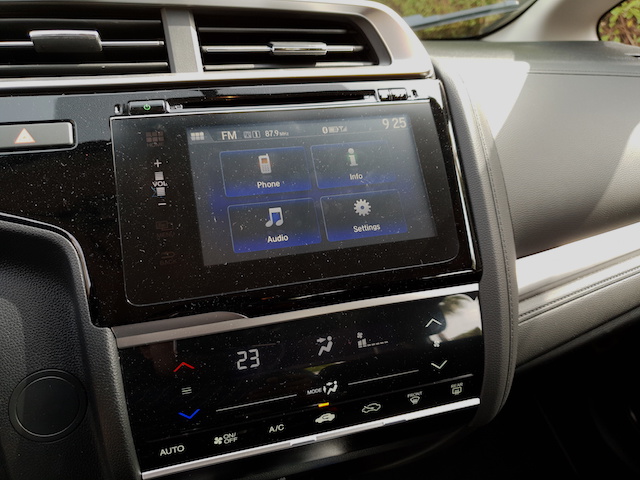
The Drive
As the car surged forward, the first surprise was the sound, borrowed from a category above. The car sounds bigger than it actually is – could have been an annoyance for being preposterous, if only its sonic presence wasn’t justified by its performance. The 1.5 L engine has an output of 130 hp and 155 Nm torque – one of the best in the category. So, the Honda Jazz doesn’t have to drag itself out of a corner or pull away apologetically from a traffic signal. The generic lethargy of subcompacts doesn’t seem to plague the Jazz, perhaps due to its aerodynamic indent and a transmission with intent.
It is driven by a CVT that almost totally does away with the usual CVT drone. It features Honda’s ‘G-shift’ that maps the shifts in a way that reminds fans of the regular gear of a 7-speed transmission. On manual mode (tiptronic shift), the instrument panel even lights up with the simulated gear number. The result is a seamlessly powerful, squat and stable ride with a steering response that sets standards in subcompact driving.
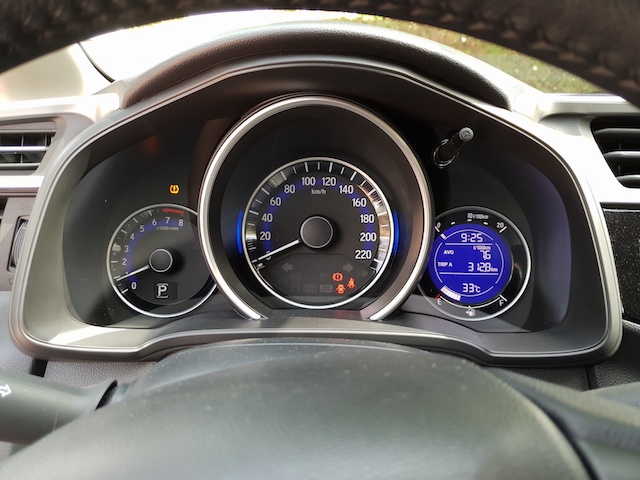
On another note, even those who hated CVTs would love this drivetrain if only for the best fuel economy in the class, even while being one of the most powerful. Jazz clocked between 14 and 15 km per litre on diverse tests during my drive. The safety features in the Jazz are standard including stability control and tyre pressure monitor. (The tyre monitor icon incidentally lit up during my test drive but I couldn’t figure out what the issue was – nothing was obvious.)
The Honda Jazz cabin isn’t silent, just like most cars in its segment – there is some road noise but you might not mind, as the car is suitably agile. There are paddle shifts but they were switched off in my test car.
The Family Drive
The Jazz comes only in one trim and therefore doesn’t seem to carry the options one would expect in the top trim of a subcompact – like the armrest, which I believe is a must-have in every cabin. This little cabin with a lot of space does have many storage pockets. There are more than half a dozen cubbyholes along the gear console spine for coins to goggles, but then none with a lid. The armrest would have bridged this gap too, with storage beneath.
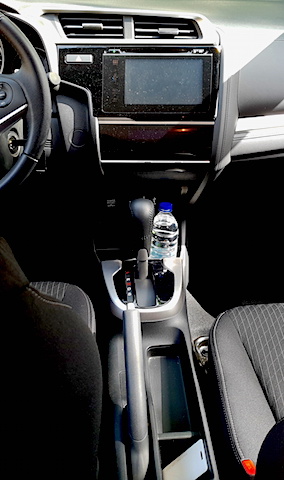
The magic of storage rests in the rear, in what Honda actually calls ‘magic seats’ system. This involves a very flexible rear seat base and seatback as well as the front passenger seatback that can fold backwards to a flat reclining position. The combinations that follow include a ‘tunnel’ created for extra long things, a supportive configuration that can hold a bicycle, a super-flat position that accommodates larger things, and even a front seat fold-back that lets the rear passenger to hang his or her feet! All this is made possible by the extra space freed up beneath the rear seats, thanks to a new low profile fuel tank that is mounted in the centre.
The essential Honda Jazz 2018
It is rarely that you come across subcompact cars that combine speed, stability, storage, safety and style to state it as succinctly as a cliché would. The Honda Jazz combines these in the right measure, as seen in the balance of achieving best-in-class fuel economy while being one of the most powerful and adroit models among entry level hatches.











Pretty sure I just find my first car- Honda Jazz .Thank you.
Happy to hear that. All the best John!
Glad i found your post..!!! I am planning to buy car and went through your review og Honda Jazz 2018. It really helped me . Thanks for your reviews.